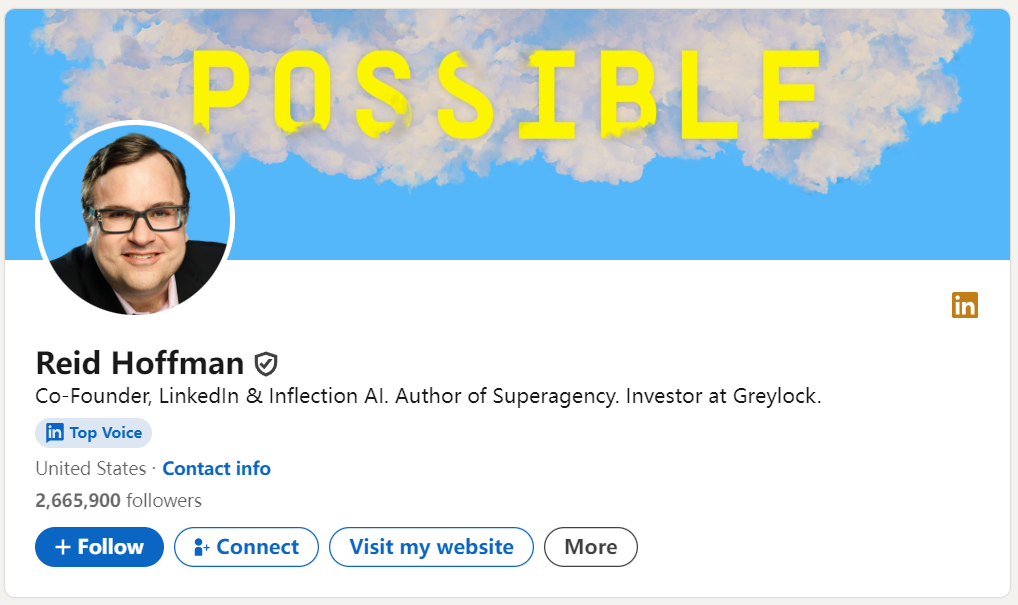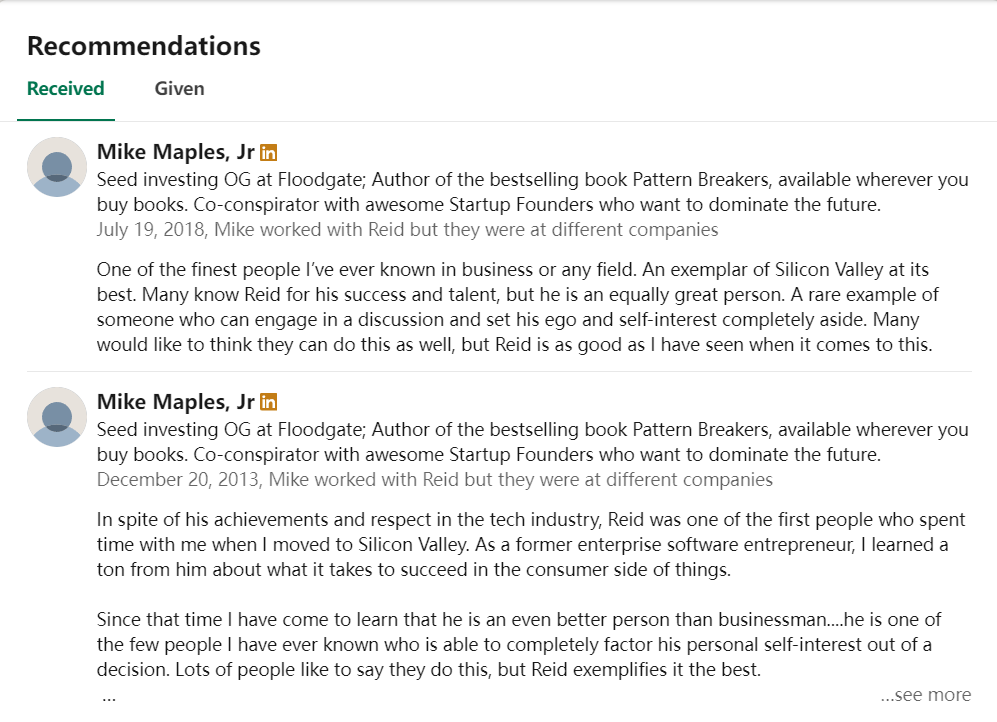How To Make Good LinkedIn Profile in 2025
Table of Contents
In today’s digital-first job market, your LinkedIn profile often makes your first professional impression. With over 1 billion million members worldwide, LinkedIn has become the go-to platform for career growth and professional networking. Whether you’re job hunting, growing your business, or building your professional brand, a well-crafted LinkedIn profile can open doors to countless opportunities. Here you will get the detailed steps to make a good profile in 2025.
What Is LinkedIn Profile
A LinkedIn profile is like your online business card and resume combined – it tells people who you are at work and what you’re good at. Think of it as your professional home on the internet, where you can share your work experience, connect with other professionals, and find new job opportunities. Unlike regular social media where you share personal stuff, LinkedIn is all about your work life – it’s where you can tell your career story, show off your skills, and build relationships with people in your industry. It’s become really important these days because many employers and clients look at LinkedIn first to learn about you before they even meet you.
Sections Display on Your LinkedIn Profile
There are three main sections you can add to your LinkedIn profile:

- Core – Start with your basic information. Filling out these sections will help you be discovered more easily by recruiters and people you may know.
- Profile Photo
- Education
- Position
- Services
- Career break
- Skills
- Recommended – By completing these sections, you will have access to more opportunities.
- Featured
- Licenses & certifications
- Projects
- Courses
- Recommendations
- Additional – This will help you grow your network and build more relationships.
- Volunteer Experience
- Publications
- Patents
- Honors & Awards
- Test scores
- Languages
- Organizations
- Causes
- Contact Info
How to Craft the Perfect LinkedIn Profile
Here are the key features that make a LinkedIn profile stand out in 2025, along with specific tips for each:
1. Profile Photo and Background Banner
A professional headshot increases profile views by 14 times compared to profiles without photos. Choose a clear, well-lit photo where you’re dressed appropriately for your industry. Your background banner should complement your personal brand – consider using company branding, your work environment, or professional designs.
- Recommended photo size: 400 x 400 pixels
- Banner size: 1584 x 396 pixels
- Keep the background simple and non-distracting
Examples of some great LinkedIn profile pictures:



2. Professional Headline
Your headline appears in search results and connection requests, making it crucial for first impressions. Go beyond your job title to include your specialty and value proposition.
- Character limit: 220 characters
- Include industry keywords
- Focus on your unique professional value

3. LinkedIn summary (About section)
Your LinkedIn summary (About section) is arguably the most crucial piece of real estate on your entire profile. Think of it as the heart of your professional story – it’s where you transform from just another profile into a real person with unique value to offer. According to LinkedIn’s own data, profiles with well-written summaries are 40% more likely to get clicked on in searches.
A quick review of top-performing summaries shows they typically follow a clear pattern:
- They start with a hook (an engaging first 2-3 lines that are visible before “…see more”)
- Include specific achievements and numbers
- Written in first person to create the connection
- End with a clear call to action

Get more detailed information about How to Write LinkedIn Summary With Examples.
4. Experience Section
Transform your work history into achievement stories. Each role should highlight your contributions and measurable results.
- Include company logos when possible
- Focus on achievements rather than duties
- Add rich media like presentations or projects
5. Skills and Endorsements
Skills have become the new currency in today’s job market, and LinkedIn data shows they’re a crucial factor in getting hired. The Skills section on your profile isn’t just a list – it’s a powerful tool that makes you 27x more likely to be discovered in searches. LinkedIn recommends highlighting both hard skills (like specific software or technical abilities) and soft skills (such as leadership or communication). The platform’s new features allow you to validate these skills through assessments and showcase them through projects, making your profile more credible.
Top Soft Skills on LinkedIn
- Communication
- Organizational skills
- Problem-solving
- Analytical skills
- Teamwork
- Management
- Team leadership
- Leadership
- Interpersonal skills
- Negotiation
Top Hard Skills on LinkedIn
- Sales
- Data analysis
- Marketing
- Python (programming language)
- Customer relationship management (CRM)
- SQL
- Research skills
- Business development
- Social media
- Training
Use AI Tool to Boost Your Job Searching
While having the right skills on your profile is important, finding jobs that match these skills can still be challenging and time-consuming. This is where Jobright.ai comes in handy – it makes your job search smarter and faster. Instead of spending hours manually matching your skills to job posts, Jobright.ai automatically reads your skills and matches them with job openings that fit you best. The AI tool understands both the skills you list and the ones hidden in your work experience, then finds jobs where these skills matter most. It’s like having a personal job matchmaker who works 24/7 to find positions that truly match your skillset, saving you time and helping you find better job matches. Plus, it keeps learning and updating its matches as you add new skills to your profile, making your job search more accurate over time.
Too busy customizing your resume to ALL of your applications?
Try the Best AI Resume Editor that suits you to every position on Jobright.ai
Find yourself with a new tailored resume that incorporates all the best practices used by professional resume coaches, all in less than 10 seconds.
Try the AI Resume Editor for FREE6. Request For Recommendations
LinkedIn recommendations serve as powerful social proof, adding credibility to your professional profile through third-party endorsements. Unlike simple endorsements, these detailed testimonials from colleagues, supervisors, or clients provide authentic insights into your work style, achievements, and professional impact.
Wonder how to ask for recommendations? Check the step-by-step guide here.

7. Activity and Engagement
Regular activity keeps your profile visible in your network’s feed. Share industry insights and engage with others’ content.
- Post frequency: 2-3 times per week
- Comment on industry trends
- Share both original and curated content
Use LinkedIn Profile Level Meter to Check Your Profile
Use the Profile Level Meter to see how complete your profile is, this is visible to yourself only.
There are three levels of your profile:
- Beginner – Where everyone starts
- Intermediate – After filling out 4 sections
- All-Star – After completing all 7 sections
After starting off as a Beginner, you can add the following recommended sections to achieve an All-star profile:
- Profile Photo
- Location
- Industry
- Education
- Position
- Skills
- Summary
*Once all the recommended sections are added successfully, you’ll receive an All-star profile rating, and the profile level meter will no longer be displayed on your profile.

Conclusion
Your LinkedIn profile is more than just a digital resume – it’s your professional story, your networking hub, and often your first impression in the business world. Whether you’re job hunting, building your business, or expanding your professional connections, a well-crafted LinkedIn profile can open doors you didn’t even know existed.
Always remember: the most effective LinkedIn profiles aren’t built overnight – they evolve with your career journey and require regular attention. Take time to implement these strategies, stay active in your professional community, and most importantly, let your unique value proposition shine through. In today’s digital-first professional world, your LinkedIn profile isn’t just telling your story – it’s helping write your next chapter.

